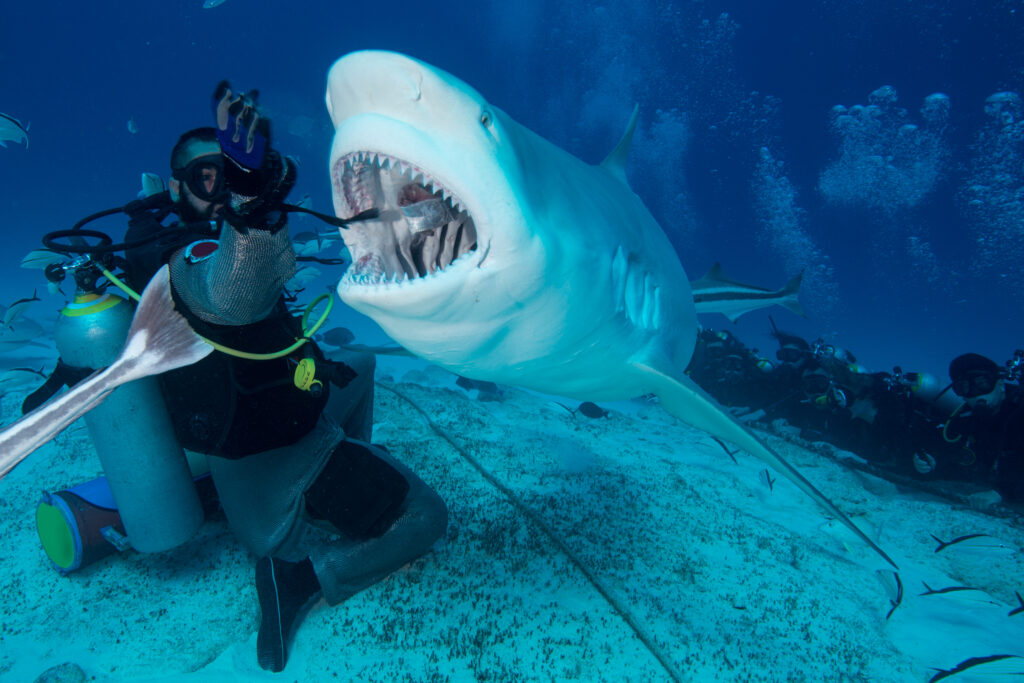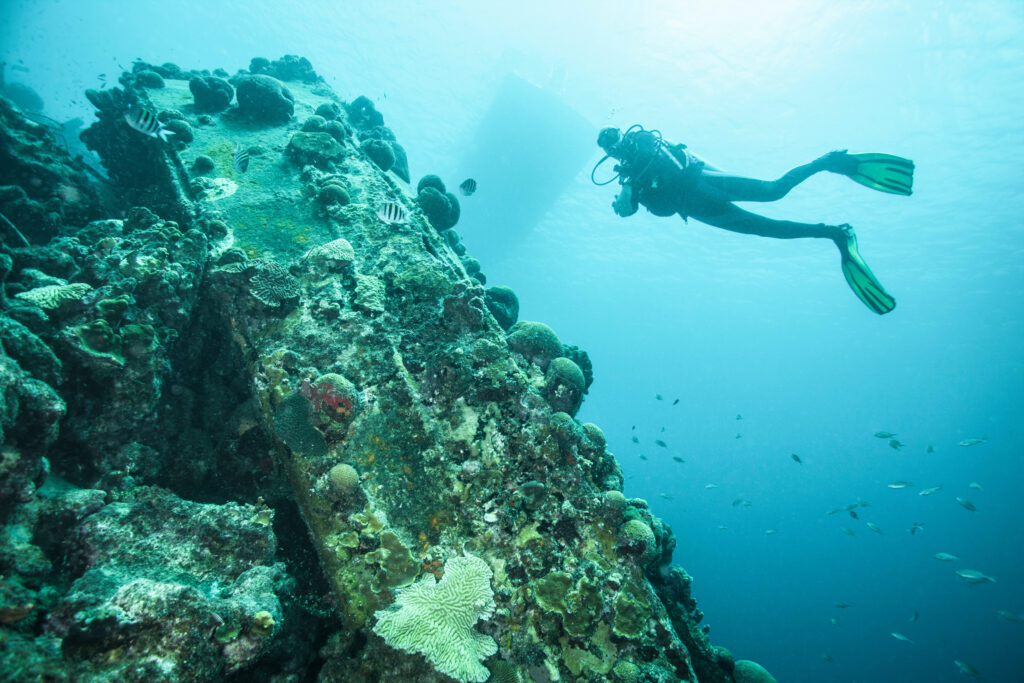What is Open Circuit Scuba?

Open circuit scuba diving is a method of underwater diving in which the diver breathes from a tank of compressed gas and exhales directly into the water. This system is contrasted with closed-circuit systems, where exhaled gas is recycled and re-breathed. Open circuit scuba is the most common and widely used system in both recreational and professional diving. It is valued for its simplicity, reliability, and the extensive training programs available to certify divers. The ease of use and availability of open circuit scuba equipment have made it a cornerstone of underwater exploration.
What is Nitrogen Narcosis?

Nitrogen narcosis, often referred to as “raptures of the deep,” is a condition that affects scuba divers at significant depths. This phenomenon is induced by the increased partial pressure of nitrogen in the body as divers descend, leading to a narcotic effect on the central nervous system. Recognized by divers and scientists alike, nitrogen narcosis can impair judgment, motor coordination, and overall cognitive function, making it a critical issue in deep-sea diving.
What is a Dive Operator?

A dive operator is a professional entity responsible for organizing and facilitating scuba diving activities for individuals and groups. Dive operators play a crucial role in ensuring safe, enjoyable, and educational experiences for both novice and experienced divers. They provide a wide range of services, including equipment rental, guided dives, training courses, and logistical support for dive trips. As central figures in the scuba diving industry, dive operators are essential for maintaining high standards of safety and environmental stewardship. Their expertise and resources enable divers to access and enjoy underwater environments that might otherwise be difficult to reach or navigate.
What is Free Air?

Free air refers to air at atmospheric pressure, which is the pressure exerted by the weight of air in the Earth’s atmosphere. In the context of scuba diving, understanding the concept of free air is crucial for managing various aspects of dive planning and safety, including buoyancy, gas consumption, and decompression sickness. This entry will delve into the relationship between free air and compressed air, and how this understanding impacts diving practices.
What is Multilevel Diving?

Multilevel diving is a technique in scuba diving that involves changing depths multiple times throughout a single dive. Unlike traditional dives, where a diver descends to a certain depth and remains there until starting their ascent, multilevel diving takes advantage of varying depths to maximize bottom time and minimize the risk of decompression sickness (DCS). This method is particularly beneficial for exploring underwater environments with significant depth variations, such as coral reefs, wrecks, and underwater walls.
What is a Gas Embolism?

A gas embolism is a serious medical condition that can occur when gas bubbles enter the bloodstream and obstruct blood vessels. This condition is particularly relevant to scuba divers due to the unique pressures and environments encountered underwater. When a diver ascends too quickly or experiences equipment failure, gas bubbles can form within the blood vessels, leading to potentially life-threatening complications. Understanding gas embolism within the context of scuba diving involves recognizing how these gas bubbles form, their impact on the body, and the measures necessary to prevent and treat this condition.
What is Outgassing?

Outgassing, in the context of scuba diving, refers to the process by which dissolved gases are released from a diver’s body tissues. This phenomenon is crucial for maintaining safety during and after a dive, as improper outgassing can lead to decompression sickness (DCS), commonly known as “the bends.” When a diver ascends too quickly, the rapid decrease in pressure can cause dissolved gases, primarily nitrogen, to form bubbles within the body. These bubbles can lead to serious health complications, emphasizing the need for a thorough understanding of outgassing dynamics and proper ascent procedures.
What is a Dropoff?

A dropoff in scuba diving refers to a steep underwater slope or cliff that descends sharply from a relatively shallow area to much deeper waters. These underwater geological features are significant for divers due to their dramatic landscapes and the rich marine life they often host. Dropoffs are found in various parts of the world and are treasured for their breathtaking views and the unique diving experiences they offer. These areas are not only visually striking but also ecologically vital, serving as habitats for a wide variety of marine species.
What function does Helium have in Scuba Diving?

Helium, a chemically inert and second lightest element in the universe, plays a significant role in the world of scuba diving, particularly in deep diving. Its unique properties provide divers with a safer breathing gas mixture that reduces the risk of nitrogen narcosis and decompression sickness. This entry explores the history, benefits, and applications of helium in scuba diving.
What is a Dive Instructor?

A dive instructor is a professional responsible for teaching and guiding individuals in the activity of scuba diving. Dive instructors play a crucial role in the scuba diving industry, ensuring that new and experienced divers acquire the necessary skills and knowledge to dive safely and enjoyably. These professionals are vital for maintaining high safety standards and promoting environmental awareness among divers. Dive instructors must possess a combination of technical diving skills, teaching abilities, and a deep understanding of underwater environments to perform their duties effectively. Their work involves training divers at various levels, from beginners to advanced certifications, and often includes leading dive trips, conducting safety briefings, and ensuring compliance with diving regulations.
